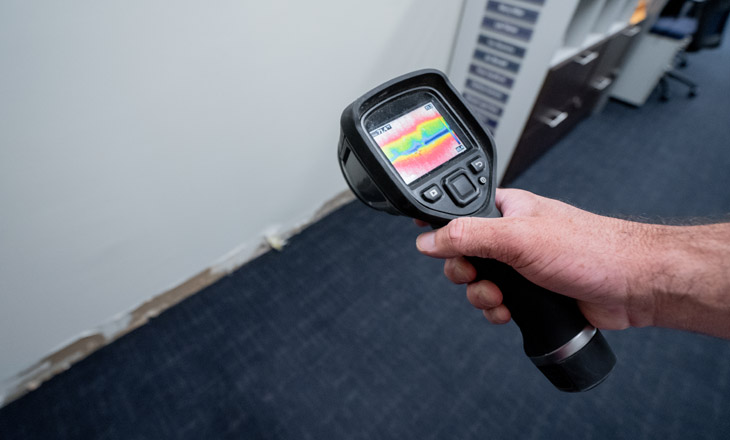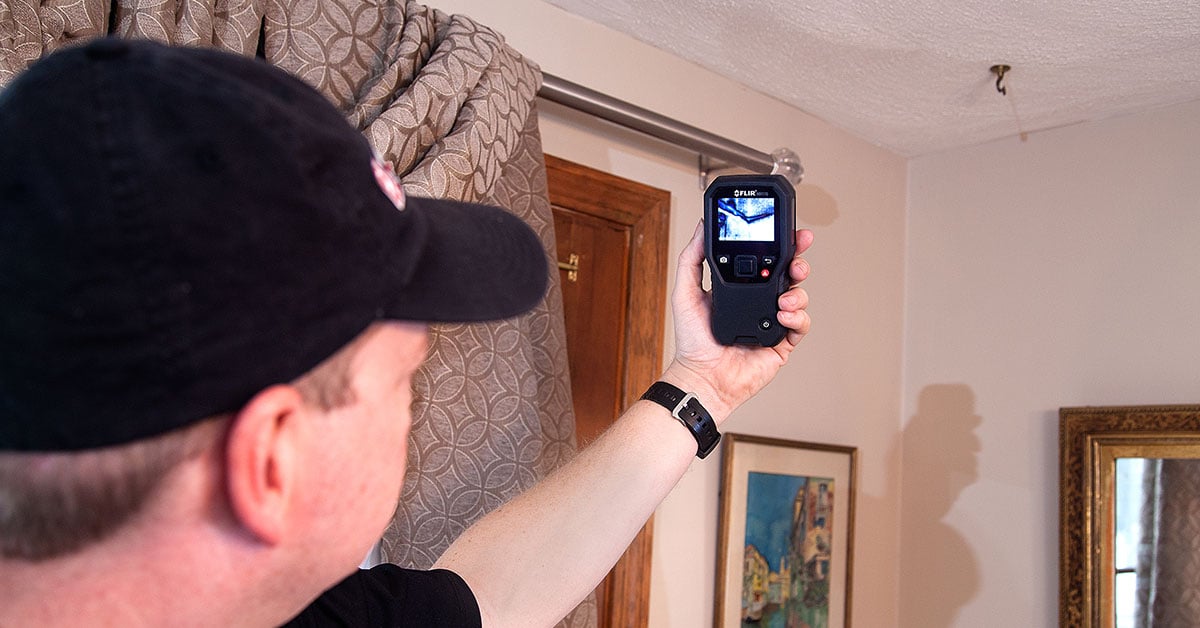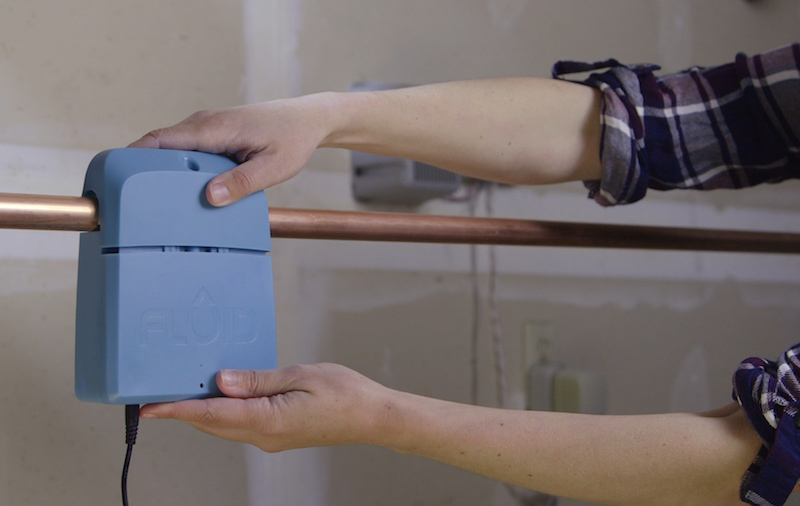Leading Water Leak Detection Techniques to Shield Your Residential Or Commercial Property from Water Damages
Leading Water Leak Detection Techniques to Shield Your Residential Or Commercial Property from Water Damages
Blog Article
Cutting-edge Solutions for Early Discovery of Water Leaks in Structures and Infrastructure
As the honesty of buildings and infrastructure is paramount, the obstacle of very early detection of water leakages has stimulated innovative options that promise to change the way we secure against prospective problems. From advanced leakage detection modern technologies to the implementation of IoT sensing units for real-time monitoring, the landscape of leakage avoidance is developing swiftly. Artificial intelligence algorithms supply a glimpse into the future of leakage forecast, while thermal imaging presents a non-intrusive technique for pinpointing concealed leakages. Automated water circulation analysis systems are reshaping exactly how leakages are identified and addressed, leading the way for a positive strategy to water leak detection. Each of these services holds the crucial to making certain the integrity and long life of our developed setting, motivating a change towards a more sustainable and efficient future.
Advanced Leakage Detection Technologies
Advanced leak discovery innovations, furnished with innovative sensing units and algorithms, play a critical duty in promptly recognizing and determining water leakages in different settings. These technologies employ a mix of acoustic, thermal, and electro-magnetic noticing methods to spot leaks accurately. Acoustic sensors find the noise of getting away water, permitting exact localization of the leak source. Thermal imaging identifies temperature level modifications triggered by water leakage, giving an additional reliable technique for leak recognition. Electromagnetic sensors can recognize modifications in magnetic fields created by water, using yet another layer of leakage detection capability.

IoT Sensors for Real-Time Tracking
In the world of modern-day water leakage detection, the combination of IoT sensing units for real-time surveillance represents a critical improvement in boosting aggressive leakage discovery capabilities. These sensors provide constant tracking of water supply, giving real-time information on water circulation prices, stress variants, and temperature changes. By leveraging IoT modern technology, these sensors can identify even the tiniest anomalies in water use patterns, allowing very early identification of prospective leaks before they intensify into major problems.
IoT sensors transfer information to a central system, where sophisticated formulas assess the details and produce informs or notices when irregularities are identified. This real-time surveillance capacity permits homeowner or facility supervisors to without delay address leakages, reducing water damage, reducing repair prices, and preserving water resources.
Moreover, IoT sensors can be incorporated with structure monitoring systems, permitting for automatic reactions to identified leakages, such as shutting down water shutoffs or activating pumps to minimize the effect of leaks. On the whole, the application of IoT sensors for my company real-time surveillance substantially improves the performance and efficiency of water leak discovery in buildings and framework.
Artificial Intelligence Algorithms for Leakage Prediction

One trick benefit of using artificial intelligence for leakage prediction is its ability to continuously discover and enhance its accuracy with time. As more data is collected and fed into the formula, it can refine its forecasts and adapt to transforming problems, ultimately raising the dependability of leak detection systems.
In addition, artificial intelligence formulas can help in recognizing subtle indicators of leakages that may go undetected by typical tracking methods. water leak detection. By evaluating complicated information sets in real-time, these formulas can provide very early warnings and informs, enabling timely treatment and precautionary maintenance to alleviate possible water damage and linked costs
Using Thermal Imaging for Leakage Detection
Thermal imaging innovation uses a promising method for detecting water leaks in numerous systems and infrastructures. By using infrared radiation and temperature level differences, thermal imaging electronic cameras can determine concealed leakages that are not easily visible to the naked eye. When water runs away from pipelines or structures, it typically transforms the temperature level of the surrounding location, creating temperature differentials that thermal video cameras can record. These temperature level abnormalities are then equated right into noticeable photos, highlighting the exact location of the leak.
One of the crucial advantages of thermal imaging for leak detection is its non-intrusive nature. Unlike conventional techniques that might need breaking into walls or floorings to situate leakages, thermal imaging permits non-destructive screening. This not just conserves time and webpage minimizes expenses however likewise reduces disruption to the building or infrastructure being analyzed. In addition, thermal imaging can swiftly scan large areas, giving a thorough review of prospective leak resources in a prompt way. In general, making use of thermal imaging modern technology boosts the effectiveness and accuracy of water leakage detection, making it a valuable device for preserving the integrity of structures and facilities.
Automated Water Circulation Analysis Equipments
How can computerized water flow analysis systems reinvent the detection and monitoring of leaks in numerous systems and facilities? Automated water circulation analysis systems supply a proactive strategy to leak detection by continuously checking water flow rates and patterns. By developing standard information, these systems can rapidly determine inconsistencies that may show a leak, allowing punctual intervention to avoid comprehensive damages.
These systems utilize sophisticated formulas to analyze real-time data and give immediate informs when abnormalities are found, allowing for quick activity to be taken. In addition, automated water flow evaluation systems can be incorporated with structure administration systems or IoT systems, enhancing general effectiveness and making it possible for remote monitoring abilities.
Additionally, the data accumulated by these systems can be made use of for anticipating upkeep objectives, you can try here aiding to determine prospective powerlessness in the facilities before leaks occur. In general, the implementation of automated water circulation evaluation systems can dramatically boost leakage detection and monitoring techniques, inevitably bring about set you back savings, decreased water wastage, and raised sustainability in structures and facilities.

Verdict
To conclude, the integration of sophisticated leak detection innovations, IoT sensing units, equipment knowing algorithms, thermal imaging, and automated water flow analysis systems provides innovative services for early detection of water leaks in structures and framework. These modern technologies make it possible for real-time surveillance, forecast of leakages, and reliable discovery techniques to avoid water damage and waste. Executing these services can help in maintaining the honesty and sustainability of water supply in different settings.
Report this page